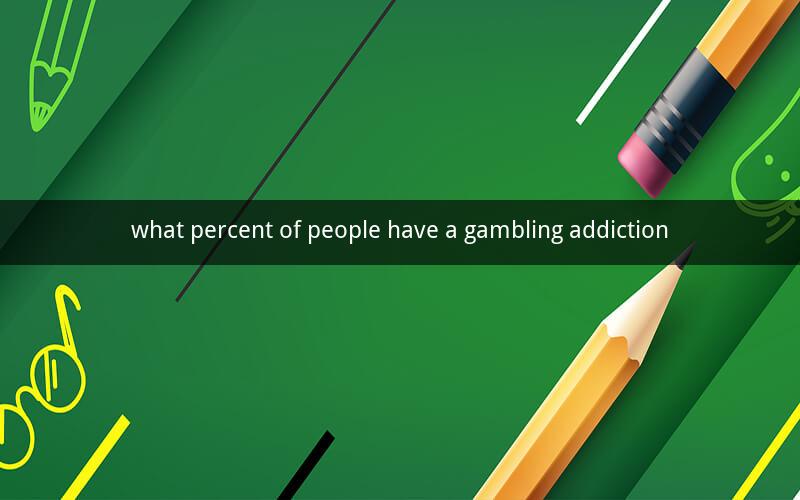
What Percent of People Have a Gambling Addiction?
Table of Contents
1. Introduction to Gambling Addiction
2. Defining Gambling Addiction
3. Risk Factors for Developing Gambling Addiction
4. The Prevalence of Gambling Addiction
- Global Statistics
- National and Regional Variations
5. Gender, Age, and Socioeconomic Factors in Gambling Addiction
6. The Impact of Technology on Gambling Addiction
7. Treatment and Recovery
8. Prevention Strategies
9. Conclusion
1. Introduction to Gambling Addiction
Gambling addiction, also known as compulsive gambling, is a condition characterized by an inability to control the urge to gamble. Despite the potential negative consequences, individuals with gambling addiction continue to engage in gambling activities. The prevalence of this addiction varies across different populations, and understanding the statistics can provide insight into the scale of the problem.
2. Defining Gambling Addiction
Gambling addiction is a behavioral disorder that can lead to significant harm in various aspects of an individual's life, including finances, relationships, work, and health. It is often categorized as an impulse-control disorder, where the individual is unable to resist the urge to engage in gambling despite adverse outcomes.
3. Risk Factors for Developing Gambling Addiction
Several factors can contribute to the development of gambling addiction. These include genetic predisposition, personality traits, family history, and environmental influences. Additionally, exposure to gambling opportunities and certain life circumstances can increase the risk.
4. The Prevalence of Gambling Addiction
Global Statistics
According to the World Health Organization (WHO), approximately 0.3% to 1.7% of the global population has a gambling addiction. However, these figures may be underestimated as individuals with gambling problems often underreport their symptoms.
National and Regional Variations
The prevalence of gambling addiction varies significantly across different countries and regions. For example, studies in the United States have reported that about 2% of adults have a gambling problem, with higher rates among men and individuals of certain ethnic backgrounds.
5. Gender, Age, and Socioeconomic Factors in Gambling Addiction
Gambling addiction tends to affect men more frequently than women, with male-to-female ratios ranging from 3:1 to 5:1. The age group most at risk is between 18 and 25 years old. Socioeconomic factors, such as income and education level, also play a role in the prevalence of gambling addiction.
6. The Impact of Technology on Gambling Addiction
The advent of technology has significantly increased the accessibility of gambling, leading to a rise in gambling addiction cases. Online gambling platforms and mobile applications have made it easier for individuals to engage in gambling activities, often without realizing the potential consequences.
7. Treatment and Recovery
Treatment for gambling addiction involves a combination of therapy, support groups, and self-help strategies. Cognitive-behavioral therapy (CBT) is particularly effective in helping individuals develop healthier gambling behaviors. Recovery is a long-term process that requires ongoing support and commitment.
8. Prevention Strategies
Prevention strategies for gambling addiction include raising awareness, implementing responsible gambling policies, and restricting access to gambling opportunities. Education programs about the risks of gambling addiction can also help individuals make informed decisions.
9. Conclusion
Gambling addiction is a significant public health issue with varying prevalence rates across different populations. Understanding the factors contributing to this addiction and implementing effective prevention and treatment strategies are crucial in addressing this problem.
---
Questions and Answers
1. Q: How can genetics contribute to gambling addiction?
A: Genetic factors can increase the risk of developing gambling addiction by influencing personality traits, such as impulsivity and thrill-seeking behavior.
2. Q: Are there any environmental factors that can trigger gambling addiction?
A: Yes, exposure to gambling opportunities, particularly in environments where gambling is prevalent, can increase the risk of developing gambling addiction.
3. Q: What is the difference between problem gambling and gambling addiction?
A: Problem gambling is characterized by a pattern of gambling behavior that leads to negative consequences, while gambling addiction involves a compulsive need to gamble that cannot be controlled.
4. Q: Can gambling addiction be cured?
A: While there is no cure for gambling addiction, it can be effectively managed through treatment and support.
5. Q: How can one recognize the signs of gambling addiction in a loved one?
A: Signs include increased time spent on gambling, financial difficulties, secrecy, and a disregard for personal, social, or work responsibilities.
6. Q: Are there any medications used to treat gambling addiction?
A: Medications such as antidepressants may be prescribed to help manage symptoms of depression or anxiety associated with gambling addiction.
7. Q: Can a person with a gambling addiction recover on their own?
A: While some individuals may attempt to recover on their own, the success rate is generally higher with professional treatment and support.
8. Q: What role does peer support play in the recovery process?
A: Peer support groups, such as Gamblers Anonymous, provide a safe and supportive environment where individuals can share their experiences and strategies for recovery.
9. Q: How can parents prevent their children from developing a gambling addiction?
A: Parents can set a positive example by not engaging in excessive gambling, discussing the risks of gambling with their children, and monitoring their access to gambling opportunities.
10. Q: What are some signs that a person's gambling problem is getting worse?
A: Signs include a decrease in personal hygiene, an increase in borrowing money, and a loss of interest in previously enjoyed activities.